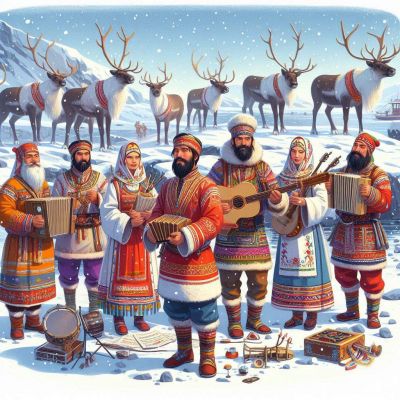The Sami people are indigenous to the Arctic region, which includes northern Norway, Sweden, Finland, and Russia’s Kola Peninsula. The Sami are known for their distinctive cultural heritage and intimate affinity with nature, and their traditional livelihoods, dialects, and customs define their distinct identity.
History
The Proto-Uralic heartland near the Volga River, which migrated northwestward during the second and third quarters of the second millennium BC, is the origin and history of the Sámi people and language.
Finnic and Sámi language speakers initially settled in the middle and upper Volga regions, migrating along old river routes in northern Russia. Some populations settled in the areas between Karelia, Ladoga, and Lake Ilmen before migrating farther west to the Finnish Lakeland circa 1600 to 1500 BC, where they evolved into the Sámi people.
Local populations spoke smaller ancient languages (Paleo-Laplandic languages) that influenced the Sámi language, which originated in the south between Lake Onega and Lake Ladoga.
During the Bronze Age, the Sámi people gradually moved over the Finnmark coast and the Kola Peninsula. Archaeological evidence in Lapland and Finnmark indicates early settlement reaching back to around 10,000 BC, though exact links to the Sámi people are unknown.

Culture
Indigenous to the Arctic regions of Norway, Sweden, Finland, and Russia’s Kola Peninsula, the Sami people’s culture is characterized by a strong connection to nature and a diverse set of customs.
Reindeer herding is important to their cultural identity, as it not only provides for their livelihoods but also dictates their social structure and seasonal rhythms. Traditional Sami clothing, known as gákti, varies in design and color patterns depending on familial and geographical associations, functioning as both a functional garment and a symbol of cultural history during festivals and celebrations.
Music has a special position in Sami culture, notably joik, a distinct type of music that expresses personal experiences, feelings, and interactions with nature.
Sami art, which includes intricately created duodji objects like knives, jewelry, and clothing accessories, demonstrates a deep understanding of natural materials and traditional workmanship passed down through generations.
Festivals like Sami National Day and Jokkmokk Winter Market commemorate these cultural expressions, providing an opportunity for communities to assemble, share stories, and reassert their cultural identity in the face of persistent difficulties of cultural assimilation and environmental
The Sámi people’s relationship with Scandinavian society changed from minor involvement in the early centuries to increased Scandinavian dominance and assimilation efforts beginning in the 18th century.
Norwegian and Swedish authorities initially neglected the Sámi but allowed them to continue their traditional lifestyles of reindeer herding. However, starting in the 18th century, governments imposed control over northern territories and developed policies aimed at incorporating the Sámi into mainstream Scandinavian society.
These efforts included imposing Scandinavian languages, eradicating the Sámi language and culture from schools, and dismissing the Sámi as culturally inferior. These historical dynamics have an ongoing impact on the socio-cultural environment of Sámi communities in Scandinavia.
Contemporary Issues
Contemporary concerns confronting the Sámi people include threats to their land rights from industrial development, which mostly affects reindeer herding, as well as challenges in conserving their culture in the face of assimilation pressures.
Politically, Sámi parliaments seek greater autonomy but confront obstacles. Socioeconomic gaps, health inequalities, and climate change all exacerbate these issues, affecting traditional behaviors and livelihoods.
Efforts to integrate Sámi history into education, as well as global campaigning for indigenous rights, illustrate ongoing challenges for identity, rights, and sustainability in an ever-changing world.
